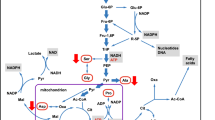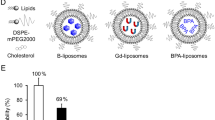Abstract
Radiolabelled meta-iodobenzylguanidine (MIBG) is selectively taken up by tumours of neuroendocrine origin, where its cellular localization is believed to be cytoplasmic. The radiopharmaceutical [131I]MIBG is now widely used in the treatment of neuroblastoma, but other radioconjugates of benzylguanidine have been little studied. We have investigated the cytotoxic efficacy of beta, alpha and Auger electron-emitting radioconjugates in treating neuroblastoma cells grown in monolayer or spheroid culture. Using a no-carrier-added synthesis route, we produced 123I-, 125I-, 131I- and 211At-labelled benzylguanidines and compared their in vitro toxicity to the neuroblastoma cell line SK-N-BE(2c) grown in monolayer and spheroid culture. The Auger electron-emitting conjugates ([123I]MIBG and [125I]MIBG) and the alpha-emitting conjugate ([211At]MABG) were highly toxic to monolayers and small spheroids, whereas the beta-emitting conjugate [131I]MIBG was relatively ineffective. The Auger emitters were more effective than expected if the cellular localization of MIBG is cytoplasmic. As dosimetrically predicted however, [211At]MABG was found to be extremely potent in terms of both concentration of radioactivity and number of atoms ml(-1) administered. In contrast, the Auger electron emitters were ineffective in the treatment of larger spheroids, while the beta emitter showed greater efficacy. These findings suggest that short-range emitters would be well suited to the treatment of circulating tumour cells or small clumps, whereas beta emitters would be superior in the treatment of subclinical metastases or macroscopic tumours. These experimental results provide support for a clinical strategy of combinations ('cocktails') of radioconjugates in targeted radiotherapy.
This is a preview of subscription content, access via your institution
Access options
Subscribe to this journal
Receive 24 print issues and online access
$259.00 per year
only $10.79 per issue
Buy this article
- Purchase on Springer Link
- Instant access to full article PDF
Prices may be subject to local taxes which are calculated during checkout
Similar content being viewed by others
Author information
Authors and Affiliations
Rights and permissions
About this article
Cite this article
Cunningham, S., Mairs, R., Wheldon, T. et al. Toxicity to neuroblastoma cells and spheroids of benzylguanidine conjugated to radionuclides with short-range emissions. Br J Cancer 77, 2061–2068 (1998). https://doi.org/10.1038/bjc.1998.348
Issue Date:
DOI: https://doi.org/10.1038/bjc.1998.348
This article is cited by
-
Recent advances in the development of 225Ac- and 211At-labeled radioligands for radiotheranostics
Analytical Sciences (2024)
-
Development of Fe3O4 core–TiO2 shell nanocomposites and nanoconjugates as a foundation for neuroblastoma radiosensitization
Cancer Nanotechnology (2021)
-
Developing preclinical models of neuroblastoma: driving therapeutic testing
BMC Biomedical Engineering (2019)
-
Antitumor effects of radionuclide treatment using α-emitting meta-211At-astato-benzylguanidine in a PC12 pheochromocytoma model
European Journal of Nuclear Medicine and Molecular Imaging (2018)
-
I-131-mIBG therapy in neuroblastoma: established role and prospective applications
Clinical and Translational Imaging (2016)



